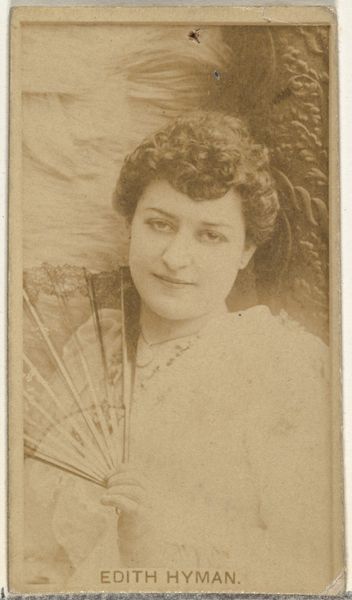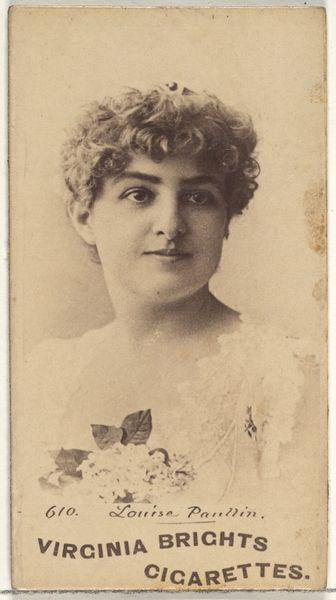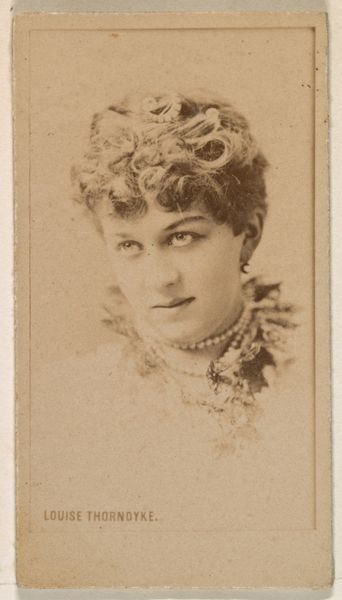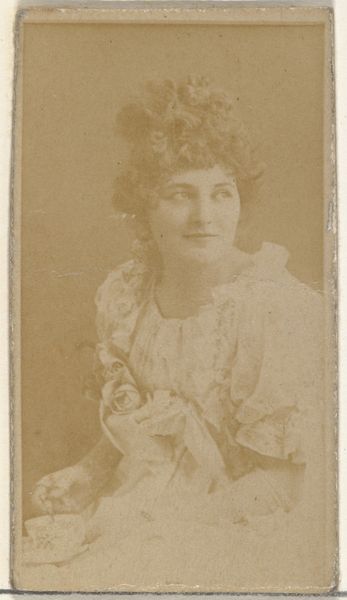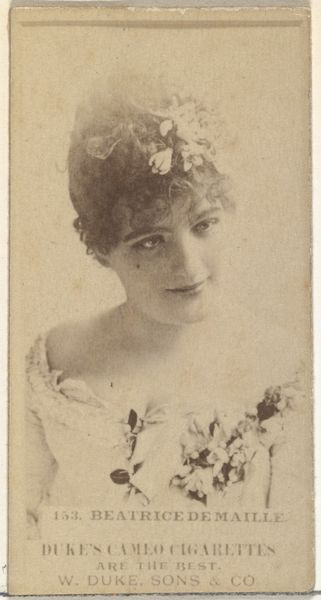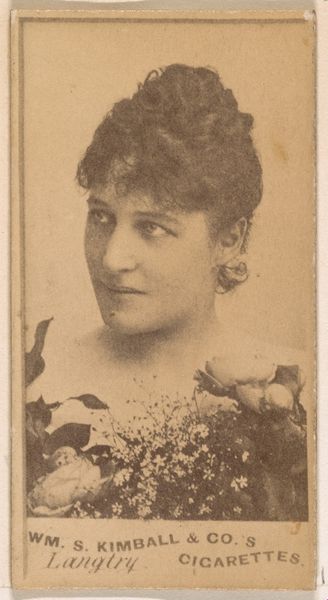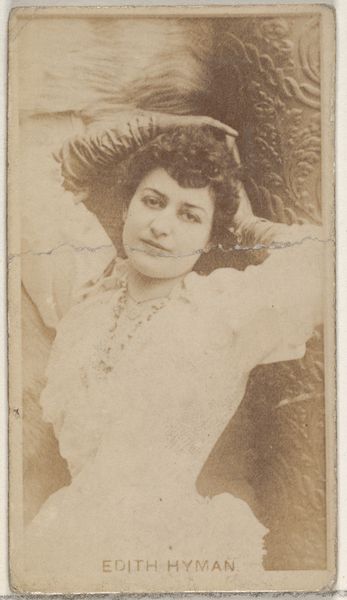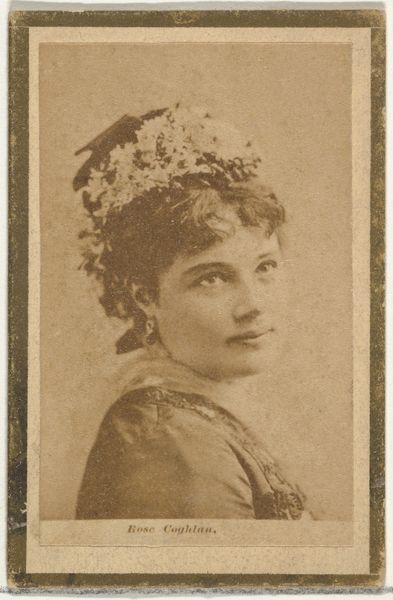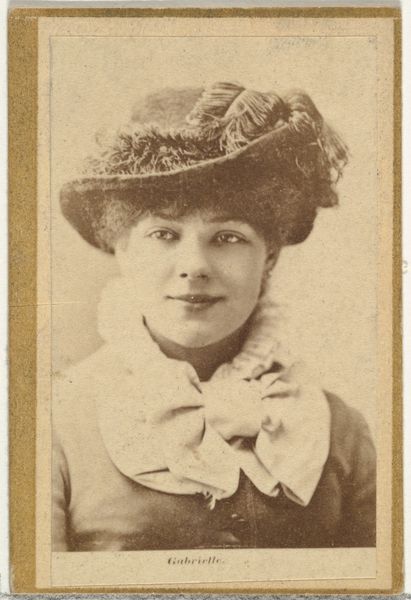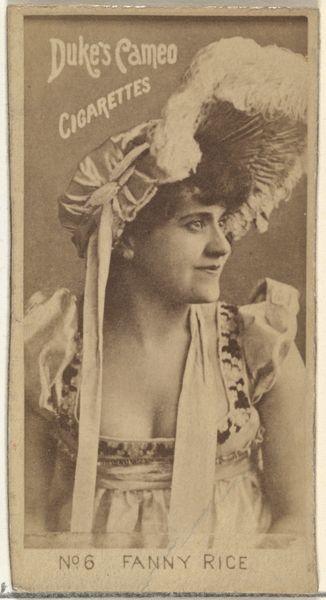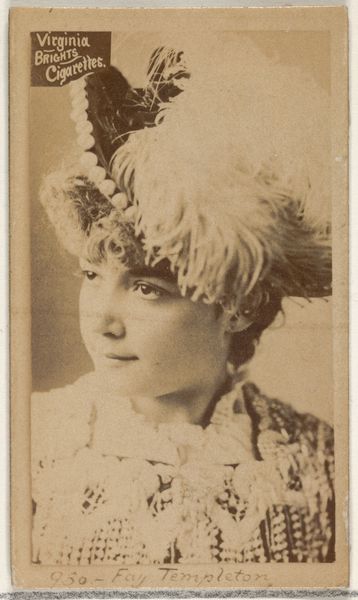
Edith Hyman, from the Actors and Actresses series (N145-8) issued by Duke Sons & Co. to promote Duke Cigarettes 1890 - 1895
0:00
0:00
drawing, print, photography
#
portrait
#
drawing
#
photo restoration
# print
#
photography
Dimensions: Sheet: 2 11/16 × 1 3/8 in. (6.8 × 3.5 cm)
Copyright: Public Domain
Editor: This is a sepia print of Edith Hyman, dating from the 1890s. It was issued by Duke Sons & Co. to promote Duke Cigarettes. It’s quite striking, this layering of lace—both her dress and the large fan she’s holding. What elements jump out to you in this image? Curator: Immediately, I’m drawn to the intricate geometry at play. The radiating lines of the fan create a dynamic contrast with the soft, almost cloud-like texture of her hair and the lace. Notice how the artist uses tonal variation to define the shapes—a sophisticated manipulation of light and shadow to create depth. Editor: I see what you mean about the contrast. It’s like there are two distinct halves, the softer textures versus the sharper lines. Curator: Precisely. The composition invites us to analyze these formal relationships. Consider the use of symmetry too—not perfect symmetry, which would be static, but a carefully calibrated balance. The fan bisects the image, drawing the eye directly to Hyman’s face, while simultaneously obscuring her body. What is the effect of that choice? Editor: Perhaps to make it more about her persona, her public image, than her physical self? And by using a print, they're making art accessible. Curator: Indeed. It is an engagement with the artistic and industrial processes. This piece compels us to deconstruct how meaning is created through formal devices. A visual artifact of late 19th century celebrity culture! Editor: I’m starting to appreciate how much can be communicated simply through form and material, irrespective of subject. Curator: Exactly! By analyzing the intrinsic visual qualities, we reveal the underlying structure and intended effects.
Comments
No comments
Be the first to comment and join the conversation on the ultimate creative platform.
